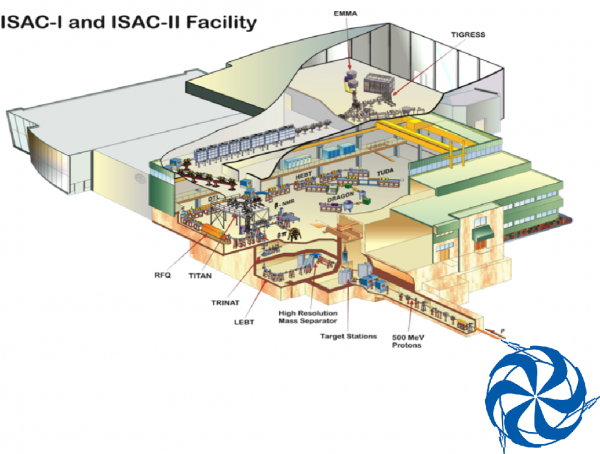
The quest for developing a unified description of all nuclei and nuclear matter and a full understanding of the origin of the heavy chemical elements as well as for testing the standard model of particle physics with precision experiments in atomic nuclei is driven by the study of nuclei far from stability. The Isotope Separator and Accelerator (ISAC) facility at TRIUMF is one of the world leading facilities for producing a wide variety of intense beams of exotic nuclei produced using the ISOL method via the bombardment of thick high-power targets with up to 100 μA of 500 MeV protons. The short-lived isotopes can be delivered to experiments using low-energy (<60 keV), available since 1999, or re-accelerated beams. For re-accelerated beams two acceleration stages are available, the first for energies of 0.15 to 1.8 AMeV since 2001, designed for high intensity RIBs for studies of nuclear reactions relevant for nuclear astrophysics, and a second stage for energies of at least 6 AMeV for masses of A<150 for nuclear reaction experiment. A wide range of experimental set-ups is available at the ISAC facility to investigate questions of current interest in nuclear astrophysics, nuclear structure and reactions, and electro-weak interaction studies, a few of which are listed here.
TRINAT uses the pressure of laser light to hold atoms of beta-decaying isotopes in a mm-sized cloud, then deduces the (otherwise invisible) neutrino momentum from the momenta of the other freely escaping products. The Standard Model prediction for the direction of neutrino emission would be perturbed by new interactions. TRINAT has made the best measurements of these effects, and the planned upgrade to 0.1% accuracy would assist the LHC's search for non-Standard Model particles by constraining (or hopefully measuring) their interactions with the first generation of quarks and leptons. A new effort will trap atoms of francium, the heaviest alkali atom (easily calculable like hydrogen), and search for new parity-violating interactions. Electromagnetism respects parity-- it is the same when reflected in a mirror-- but many new interactions don't (Behr).
The TITAN Experiment uses ion traps to carry out the most precise mass measurements on short-lived exotic isotopes. The experiment makes use of the world-leading on-line facility ISAC at TRIUMF on UBC campus to help test the Standard Model and test modern theoretical models that connect nuclear forces with underlying fundamental strong interaction. Nuclear astrophysics and nucleosynthesis are the other driving motivations for the experiments at TITAN (Dilling).
Excited states in exotic nuclei are studied via gamma-ray spectroscopy following beta decay, with the GRIFFIN spectrometer, or nuclear reactions, with the TIGRESS spectrometer. These powerful microscopes provide insights into the nuclear dynamics and shell structure far away from stability and test modern theoretical models that connect nuclear forces with the underlying fundamental strong interaction. The IRIS solid hydrogen target experiment enables reaction studies even further away from stability using lower intensity radioactive ion beams. Aside from studying the nature of atomic nuclei this suite of experiments is also essential for the study of nuclei that play a role in the astrophysical r-process, which is responsible for the synthesis of half the chemical elements from iron to uranium. The study of these nuclei in the laboratory, combined with astrophysical simulations and the new era of multi-messenger astronomy, will help elucidate the origin of the heavy elements in the universe (Kruecken).